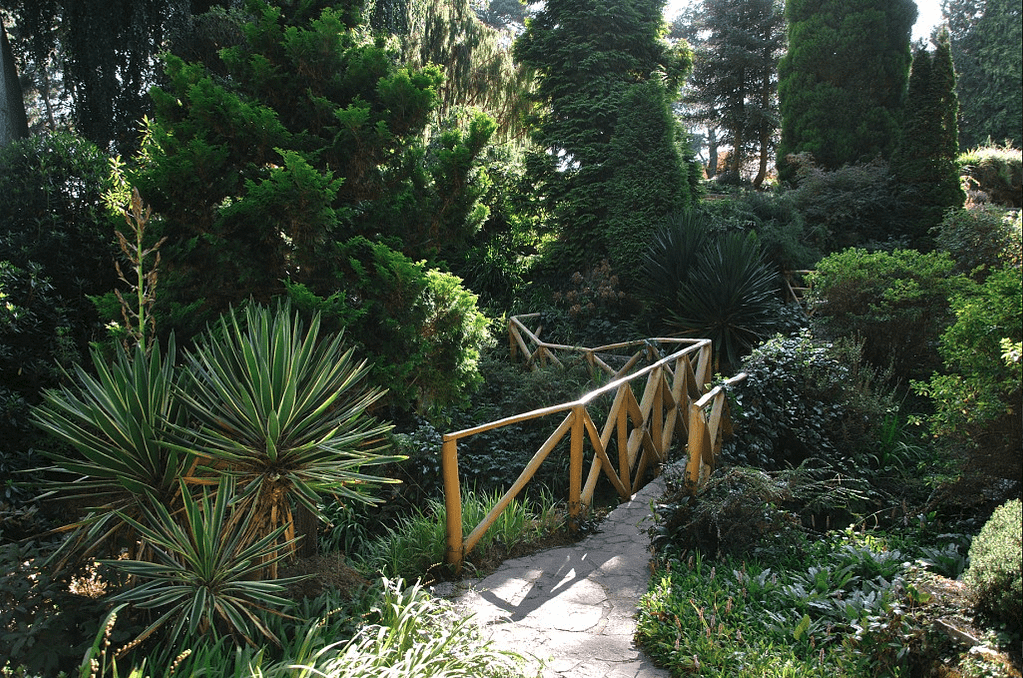The art and craft of the Japanese garden continue to thrive today after well over 1,300 years. Japanese gardens were first introduced in the Asuka period between the 6th and 7th centuries. Japanese merchants observed the gardens in China which were being built at the time and brought back many of the techniques and styles used.
But how can you differentiate between Japanese and Chinese styles of garden design?
There are some key differences between Chinese and Japanese gardens today. Chinese gardens traditionally are more exotic and ornamental. They also have more architecture and structures throughout. Whereas, the Japanese gardens tend to be more minimalist and subdued.
A main difference between the two gardens is that Chinese gardens are designed to be a series of concealed scenes. They will tend to have a number of winding paths throughout the garden so the visitor can enjoy the garden from many viewpoints.
A Chinese-styled garden is intended to be experienced with the path and the entire garden should not be seen from one particular viewpoint, which is very different from the Japanese Gardens.
The elements used to form a Japanese garden are there to create an ideal environment. They have been guided by Zen and Shinto principles to create a meditative state and nature-appreciating mood.
There’s a selection of elements included in a Japanese garden which are stone, water, plants, bridges, and lanterns. However, the three essential elements are water, stone, and plants. The Japanese garden must include these three elements but you can remove any unwanted elements to create your own personal take on a Japanese garden.
The Elements
Water symbolises calm, wonder, and continuity in the Japanese garden and contributes to the expression of nature in the garden. Adding water into the garden brings the environment alive and helps to attract wildlife too, whilst providing moisture to the planting around it.
Having water circulating through the garden helps to keep the air fresh through hot spells in summer. Whether the water in the garden collects in ponds or falls down the streams it’s an important element of the Japanese garden.
The stones in the garden symbolise duration and anchor the garden to the ground. It’s important to note that each stone in the garden is laid out with strict rules. This is depending on their shape and size, and you will often find them in pairs by style.
The size and shape of the stones and rocks used in the garden design are on par with their purpose. You need to lay them out and style them so they look like they’ve been there for a long time. You can use larger rocks as features and use smaller ones to create clusters around the feature.
The sand that surrounds the stone path is crucial to its placement. You can use the sand to bury the stones for the path deeper into the ground and prevent it from moving around.
If you did want to use a larger rock or stone to make a feature piece, this would usually be one with an unusual shape. The type of stone to use is one of the most important factors in the design of a Japanese garden. However, the most commonly used stones are granite, limestone and slate.
Plants in Japanese gardens are commonly evergreen although maples are frequently used too. This is so the gardens can look their best all year round and keep their calm and relaxing feel throughout the seasons. They also help to create a perfect background for the other elements in the garden like the stone, water, and bridges.
Acer and cherry trees are chosen for their seasonal appeal and will be placed in the garden to help bring out their characteristics. Pine, plum trees, and bamboo are popular options as they are chosen for their beauty in the winter when the other plants are dormant.
Other plants you will commonly find in a Japanese garden are serviceberry (Amelanchier asiatica), lotus, iris, shrub peony, horsetail, and crabapple.
Bridges are an important element of Japanese garden design, as they allow you to take in and appreciate the garden design for its full beauty. You can take in your surroundings from a higher view and enjoy seeing the wildlife and carp in their own environment.

These will be constructed from wood, stone, or bamboo. They can be arc-shaped, rounded, or in a zigzag but will always reflect the environment they are surrounded by. If you would like an area for you to relax and take in the calming atmosphere of the garden, you can always add a pergola or teahouse.
Use lanterns on the ground to create a cosy environment or hang them to enjoy your garden day and night. This can help make your garden feel complete. These were originally used to help guide visitors through the garden during night-time celebrations. However, they were also thought to clear the clouds of ignorance and to be the shining light for all of those in the garden.
Introducing just some of the elements and features outlined above can bring a touch of meditative calm to your outside space, but if you’re ready to elevate your garden to temple-level tranquillity then talk to us about your garden dreams.




